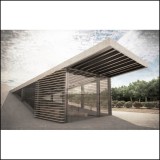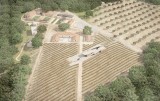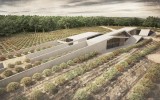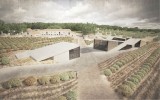Supervisor:
2014
The current thesis concerns the design of a new wine production unit followed by vineyard cultivation in the Tatoi Estate, in Attiki.
The Tatoi Estate, well known as the residence of the ex royal family of Hellas is situated at the southeast foot of mount Parnes and covers the same area as the ancient Municipality of Dekeleia.
Despite its present decline and lack of exploitation, in the past it has been a model of autonomous farming with rich cattle growth and extensive agricultural activity. The wine production activity bloomed and wine under the name “Oinos Dekeleias’’ has been one of the most remarkable profit sources for the farm.
In recent years, there has been an effort regarding the re-opening of the Estate and the enhancement not only of its natural beauty but also of its architectural heritage based on the axis of original production. Having this initiative as motivation, the building of a new winery is proposed in the historical centre of the farm and in the heart of the ex agriculture and cattle-raising unit.
The new uses are being developed on three thematic axes namely education, recreation and production respectively.
The first two axes are included integrally in the environment of the existing buildings while the third is to the south, where the old vineyards used to be.
The existing buildings now host the information center, administration hall, wine museum, reading room, wine lab, exhibition and accommodation centre.
The recreation character that is being offered in the Estate is based on the predominance of nature. Therefore, the winery design follows the logic of minimal intervention respecting the substance of the ground and the surrounding nature making sure that most of it is below ground level.
Adopting the pattern of the linear arrangement of the new vineyards which are being placed on both sides and the gentle incline of the mountain, the winery, due to its long and slopy roofs which are being extended to meet the ground, becomes totally integrated in one with the landscape.
It is being developed in three levels including areas for production, administration and reception and waiting rooms for the public, offering views to the vineyards and the forest from the entrance level.
The challenge of the current design lies on the fact that new interventions are being invited to deal with a place of memory and exceptional as well as symbolic merit as a national monument of recent history and cultural heritage.
The vine and enological activity revival modifies the park into a dynamic touristic destination while offering multiple activities which aim at a sustainable development.







